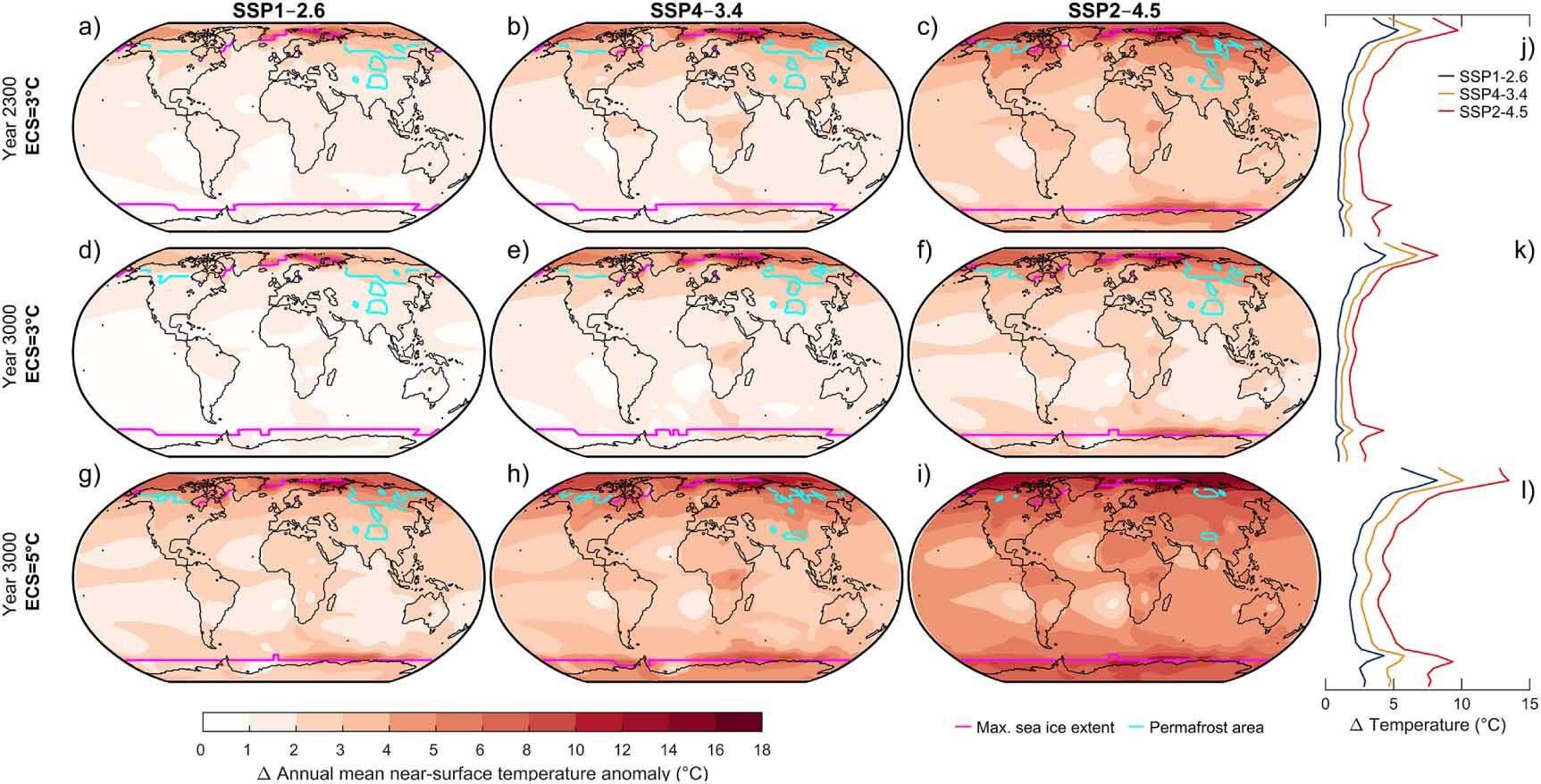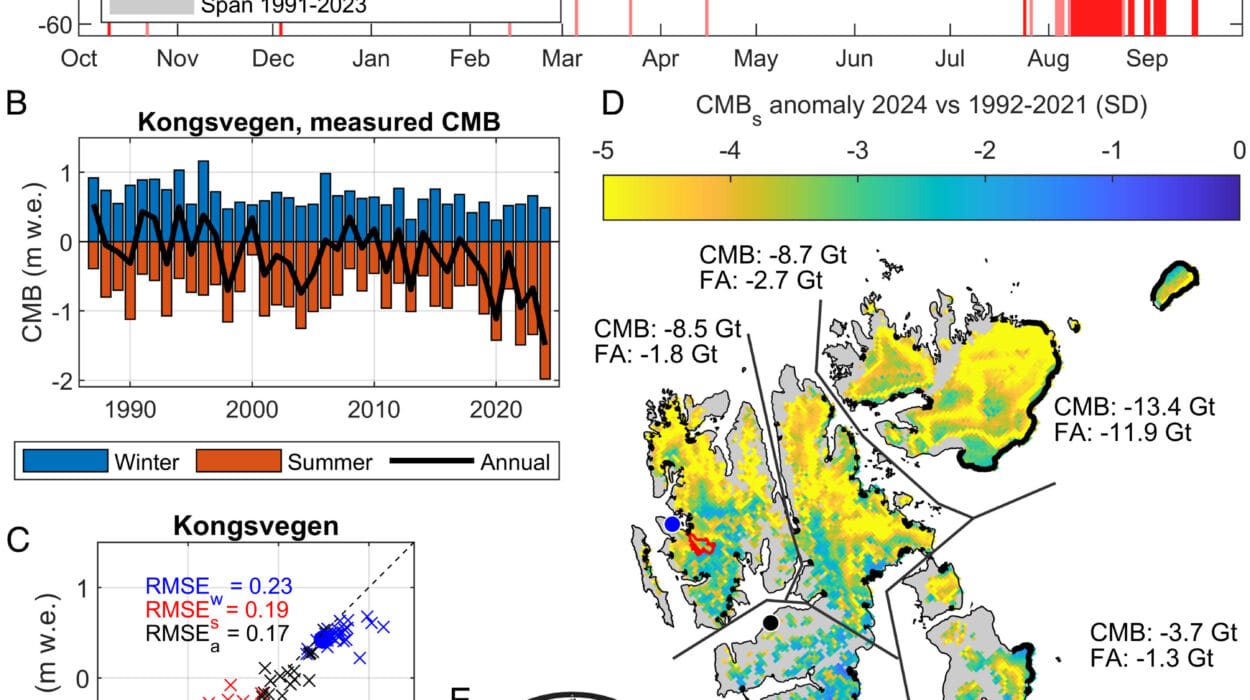The Earth’s climate is becoming increasingly sensitive to human actions, with recent studies revealing that global heating over the next millennium could exceed previous projections, primarily due to carbon cycle feedback loops. According to a new study conducted by the Potsdam Institute for Climate Impact Research (PIK), even emission scenarios typically considered “safe” could result in temperature increases far above the Paris Agreement’s target of limiting global temperature rise to well below 2°C. This research offers a sobering reminder of the importance of reducing carbon emissions as quickly as possible to prevent a climate disaster.
The study, published in Environmental Research Letters, takes a bold step by making long-term projections that span the next 1,000 years. What sets this analysis apart is its incorporation of established carbon cycle feedbacks, such as the thawing of permafrost and the release of methane. These feedbacks, which amplify warming once triggered, could push the global temperature much higher than anticipated under more moderate emissions scenarios.
The Reality of Carbon Cycle Feedbacks
One of the most striking conclusions of the study is that even with emission reductions in line with current decarbonization trends, natural feedback mechanisms in the carbon cycle could drive warming far beyond the targets set in the Paris Agreement. “Our study demonstrates that even in emission scenarios typically considered ‘safe,’ where global warming is expected to remain below 2°C, climate and carbon cycle feedbacks like the thawing of permafrost could lead to temperature increases substantially above this threshold,” explains Christine Kaufhold, the lead author of the study.
Feedback loops, like the thawing of permafrost, are a critical factor that many models fail to fully incorporate. As permafrost melts, it releases vast amounts of methane—a potent greenhouse gas—into the atmosphere, further intensifying warming. This creates a vicious cycle that can accelerate temperature increases, pushing the planet towards tipping points that were once thought to be centuries away.
The Importance of Long-Term Projections
Most existing studies on climate change focus on short-term scenarios, typically ending by the year 2100 or 2300. These studies, while valuable, fail to capture the true extent of potential peak warming over longer timescales. The PIK study, however, breaks this limitation by simulating future climate scenarios over the next millennium. By running extended simulations and factoring in all major carbon cycle feedbacks, including methane release from thawing permafrost, the study was able to project the long-term effects of human-induced climate change with unprecedented accuracy.
The research team used PIK’s newly developed Earth system model, CLIMBER-X, which integrates physical, biological, and geochemical processes, including atmospheric and oceanic conditions. This advanced model also simulates how the carbon cycle, including methane dynamics, responds to various climate forcings, such as human-made greenhouse gas emissions.
Climate Sensitivity: A Key Determinant of Future Warming
Another critical factor influencing the study’s findings is climate sensitivity, which refers to how much the Earth’s average temperature is likely to rise in response to a doubling of carbon dioxide (CO₂) concentrations in the atmosphere. The study considered a range of climate sensitivity scenarios, varying between 2°C and 5°C, based on estimates provided by the Intergovernmental Panel on Climate Change (IPCC).
According to the study’s authors, the Paris Agreement’s goal of limiting warming to below 2°C is only achievable under very low emission scenarios, particularly if the equilibrium climate sensitivity (ECS) is lower than the current best estimate of 3°C. As Matteo Willeit, a co-author of the study, points out, “If the ECS exceeds 3°C, carbon reduction must accelerate even more quickly than previously thought to keep the Paris target within reach.” This means that even with ambitious emission reductions, the potential for higher-than-expected warming remains a significant concern if the ECS is underestimated.
The study underscores the importance of accurately estimating ECS, as even slight miscalculations could result in vastly different climate outcomes. If ECS is higher than anticipated, the global community must take more drastic action to mitigate climate change and ensure the success of the Paris Agreement.
The Urgent Need for Accelerated Carbon Reduction Efforts
The study’s findings leave no room for complacency. The window for limiting global warming to below 2°C is rapidly closing, and the climate system’s resilience is weakening. As Johan Rockström, director of PIK and co-author of the paper, emphasizes, “We are already seeing signs that the Earth system is losing resilience, which may trigger feedbacks that increase climate sensitivity, accelerate warming, and increase deviations from predicted trends.”
This loss of resilience means that the planet’s ecosystems, including critical carbon sinks like forests and oceans, are becoming less effective at absorbing CO₂. As the climate warms, these ecosystems may reach tipping points where they can no longer function as carbon sinks, further compounding the warming effects. This cycle of accelerating warming, combined with the potential for feedback loops, demonstrates the urgent need for even faster and more aggressive carbon reduction efforts.
A Call to Action: Securing a Livable Future
The study highlights that the actions taken today will have profound consequences for the planet’s future. “Today’s actions will determine the future of life on this planet for centuries to come,” concludes Rockström. The researchers’ projections reveal that even modest changes in emissions could lead to far greater warming than previously anticipated, complicating efforts to meet the Paris targets. The longer we delay in taking decisive action, the more difficult it will become to avert catastrophic climate outcomes.
To secure a livable future, the global community must urgently step up its efforts to reduce emissions and remove CO₂ from the atmosphere. The Paris Agreement’s target is not just a political goal; it is a fundamental physical limit that must be respected to avoid the worst effects of climate change. Failure to act now could push the planet beyond the point of no return, triggering irreversible damage to ecosystems, economies, and societies.
The study calls for a renewed commitment to carbon reduction, carbon removal technologies, and climate resilience strategies. While it may still be possible to meet the Paris target, the window of opportunity is closing rapidly, and the risks associated with failing to act are growing exponentially.
Conclusion: A Turning Point in Climate Science
This groundbreaking research by the Potsdam Institute for Climate Impact Research marks a turning point in our understanding of climate change and its long-term impacts. The study not only challenges existing projections of future warming but also highlights the critical importance of factoring in carbon cycle feedbacks, such as methane emissions from permafrost thaw, which can dramatically amplify global temperatures.
As we look to the future, it is clear that mitigating climate change will require more than just incremental reductions in emissions. It will require bold action, innovation, and collaboration on a global scale. The consequences of inaction are too great to ignore, and the time to act is now. The next millennium is in our hands—how we respond today will shape the world for generations to come.
Reference: Christine Kaufhold et al, Interplay between climate and carbon cycle feedbacks could substantially enhance future warming, Environmental Research Letters (2025). DOI: 10.1088/1748-9326/adb6be






